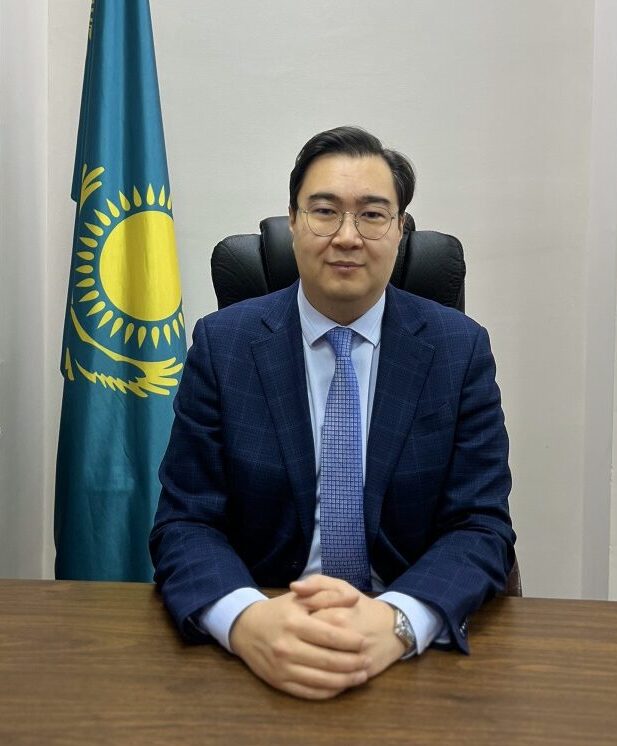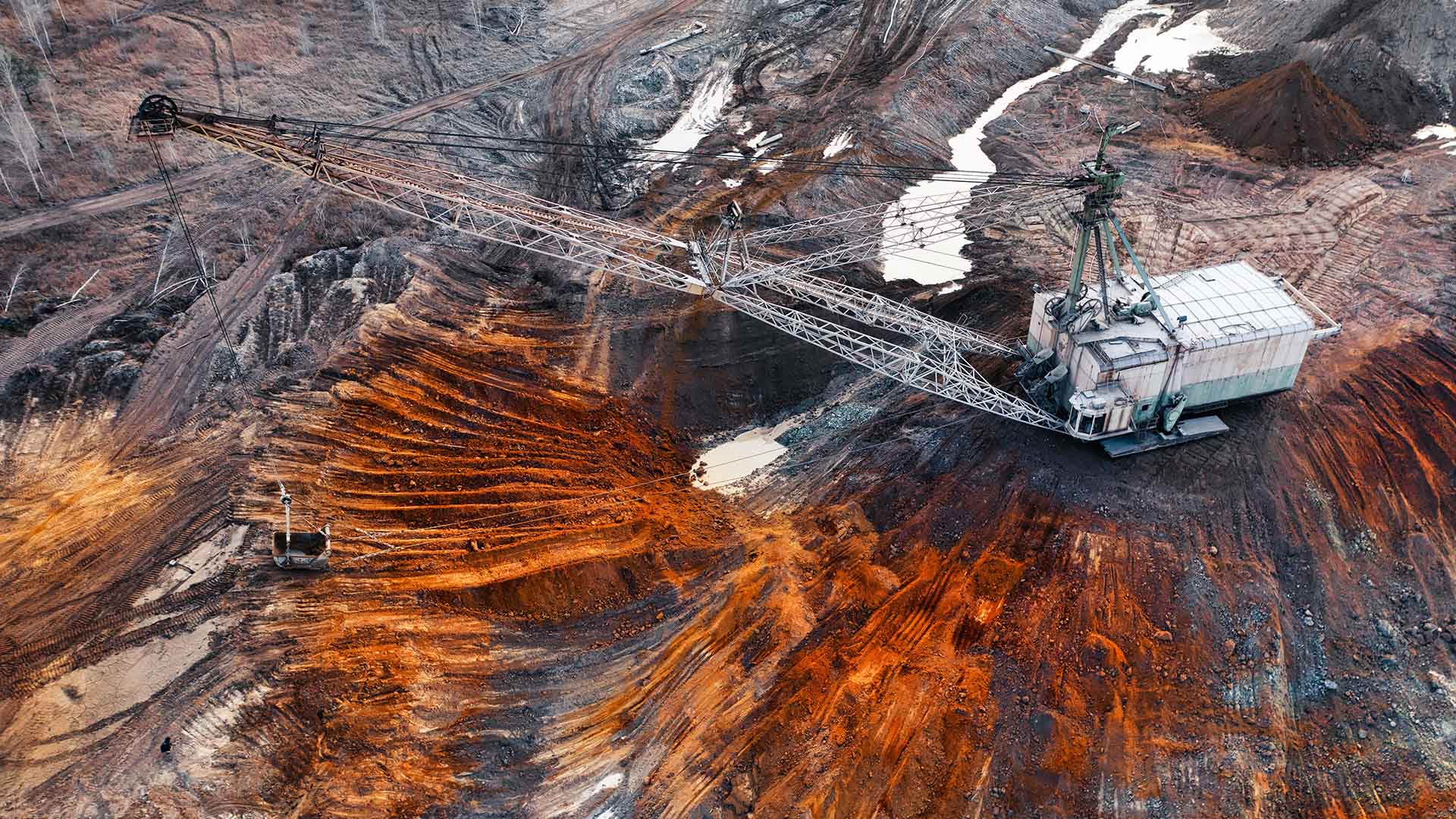ASTANA – Kazakhstan has 15 rare earth deposits, strategically important components of electronics and clean energy technology, and eyes for closer cooperation with international partners in uncovering the ample opportunities these deposits present, Chairman of the National Geological Service Yerlan Galiyev told The Astana Times.

Yerlan Galiyev. Photo credit: NGS
The National Geological Service was created in 2022 with a goal to provide comprehensive service support to subsoil users.
As the world is in the midst of a transition to clean technology, demand for rare earth metals is growing. The International Energy Agency (IEA) estimates rare earth elements may see three to seven times higher demand in 2040 than today, depending on the choice of wind turbines and the strength of policy support.
Rare earth metals refer to a group of 17 elements in the periodic table, which include 15 lanthanides, as well as scandium and yttrium. They are used as components in high-technology devices, including smartphones, digital cameras, computer hard disks, fluorescent and light-emitting-diode (LED) lights and computer monitors. They are also used in clean energy and even defense technologies.

“In industry, rare earth metals are used both in mixed form and individually, with metal oxides predominantly employed. They are primarily used as alloying additives in various steels and alloys, getters [gas absorbers] in electronic devices, manufacturing magnetic materials and igniter mixtures, serving as catalysts, and hydrogen storage materials in the production of special types of glass, ceramics, and in nuclear technology,” said Galiyev.
The renewable energy sector also has a keen interest in ensuring stable supply chains for rare earth minerals and diversifying sources of reserves.
Deposits in Kazakhstan
Fifteen rare earth deposits registered in the state are spread across three regions of Kazakhstan: Turkistan, Kostanai, and Mangystau.

Kazakhstan has a huge potential when it comes to mining rare earth metals. Photo credit: Shutterstock.
Deposits in the Turkistan Region are Budenovskoye, Akdala, Inkai, Kanzhugan, Moiynkum Central, Mynkuduk West and Central and Jamchi. In the Kostanai Region, there are Akbulak and Kundybay, and in the Mangystau Region, there are Melovoye, Taibogar, Tasmurun, Tomak and storage of technogenic mineral formations.
Data from the National Geological Service also indicates Kazakhstan possesses a raw material base of rare metals, including tungsten with 2.2 million tons of reserves, molybdenum with one million tons, lithium with 75,600 tons, tantalum with 4,600 tons, niobium with 28,100 tons, beryllium with 58,000 tons, among others.
Rare metals is a broader category that includes elements that are rare in the Earth’s crust or have limited commercial uses. It encompasses a variety of elements, some of which may not be classified as rare earth metals.
Despite their name, rare earths are not particularly scarce. What makes them rare is that they are hardly found in concentrations and quantities significant enough to justify their commercial extraction.
In terms of rare metals, Kazakhstan boasts six lithium oxide deposits. However, Galiyev noted that the prospects for the development of these deposits are not high due to the absence of efficient processing technologies and the low profitability of development.
There are also two deposits of cupriferous sandstones containing osmium oxide in Zhezkazgan and Itauz in the Karagandy Region.
“At these deposits, the by-product extraction of copper-containing ores with osmium is conducted by Kazakhmys. The production of osmium-187 is managed by the Zhezkazganredmet state enterprise,” he said.
Besides this, the nation also has 17 deposits of tantalum-containing ores, including 13 deposits with associated niobium. Nearly 80% of the reserves are deposits of rare-metal pegmatites in eastern Kazakhstan and the Sarymbet deposit in northern Kazakhstan.
Strategic importance
In his address to the nation in September 2023, President Kassym-Jomart Tokayev said developing deposits of rare and rare-earth metals should be a priority task. He described these metals as a “new oil.”
“Countries that succeed in this area will set the course for technological progress worldwide,” he said back then.
Kazakh expert in geology and subsoil use Bakyt Muratov said rare and rare-earth metals are the “vitamins of metallurgical production.”
Muratov also sees a sharp increase in global demand for rare and rare-earth metals in recent years. High-quality low-alloy niobium and rare-earth steels are important for the transport engineering sector, oil and gas extraction industries, and the associated pipeline systems worldwide.
“For instance, it is not a secret among specialists and scientists that each ton of niobium introduced into low-carbon steels for transportation and construction products allows for saving 200-300 tons of steel and reducing the weight of the structure by 30-40%. Moreover, the service life of the corresponding products increases by 1.5-2 times,” he told The Astana Times.
However, Muratov acknowledges that the production of rare metals, rare earths, and their compounds in Kazakhstan can be characterized as not living up to their potential. He said there has been a “three-decade stagnation.”
He said Kazakhstan needs to focus on the development of geology, exploration of ore deposits and prospective areas, new technologies for the extraction and enrichment of rare and rare-earth metals, research and development, as well as the training of professionals.
Geopolitical factor in rare earth metals
According to Washington-based Benchmark Minerals Intelligence, China is the world’s top miner and processor of rare earths. China is projected to be around 71% in mined praseodymium-neodymium (PrND) and 86% in PrNd oxides in 2023, according to Benchmark data.
China’s role in shaping global prices for rare earths and supply chains is undeniable. As an example, it announced a ban in December that covers critical technologies for extracting and separating rare earths, as well as for producing specific types of magnets, further consolidating China’s position as a virtual monopoly.
Countries worldwide, especially those highly dependent on these minerals, including the European Union, have a vested interest in securing additional sources of rare earths to reduce reliance on China.
In a policy brief released in June 2022, the Caspian Policy Center explains this move doesn’t stem from geopolitical reasons only, but also to avoid supply disruptions that came with the onset of the COVID-19 pandemic.
“Seeking partnerships in resource-rich Central Asia could be a unique opportunity for the United States and others to attain new sources for rare earth minerals and thereby improve their economic and national security. For countries in the region, rare earth elements extraction represents an important commercial opportunity,” write the center’s analysts.
But for that commercial opportunity to become a reality, it will require “important changes in policies, thinking, and ways of doing business.”
“Good geology alone is not enough,” reads the report.
Cooperation with international partners
The topic of rare earth metals has become more prominent in discussions between Kazakh officials and their foreign partners. As the demand for rare metals is expected to grow in the coming years, officials assert Kazakhstan can meet this demand.
At the Kazakh-German Business Forum in June, Kazakhstan’s Creada Corporation and Germany’s HMS Bergbau agreed on investments and the development of a project for the exploration, extraction, and processing of complex rare metal ores in eastern Kazakhstan. The planned project will cost $200 million.
Rare earths, and more broadly critical raw minerals, are also on the agenda in the cooperation between Kazakhstan and the EU. The EU relies on China to meet 98% of its needs of supply and refining of rare earths, as well as manufacturing of permanent magnets.
Facilitating these discussions was a strategic partnership agreement in raw materials, batteries and renewable energy signed by Kazakhstan and the EU in November 2022.
“To diversify sources of critical raw materials, countries in need of rare metals and rare earth metals established cooperation with producer countries, including Kazakhstan. Kazakhstan has gained widespread recognition by forming partnerships with the EU, the United Kingdom, the United States, France, and Korea,” said Galiyev.
This collaboration, he noted, aims to attract investments in the exploration of deposits and technogenic mineral formations, transfer technologies for comprehensive processing of hard-to-extract ores and develop the production of products of rare earths and rare metals.
Expanding geological exploration
These efforts are part of the nation’s broader efforts to expand geological exploration. It also stems from President Kassym-Jomart Tokayev’s directive to increase the area of geological and geophysical exploration to at least 2.2 million square kilometers by 2026.
Galiyev stressed that the early stages of geological exploration activities are underway to attract private investments in subsoil use. These include in-depth studies of areas, geological and hydrogeological surveys, geological-mineralogical and deep geological mapping at 1:200,000 scale, as well as prospecting and thematic work.
The total coverage of the country’s geological and geophysical exploration is expected to reach 2.01 million square kilometers in 2024, 2.038 million square kilometers in 2025, and 2.21 million square kilometers in 2026.
According to Muratov, the transition to a digital format, the creation of a national geological database, is a “matter of time, financial, and staff resources.”
“Well-known large corporations in the country are currently digitizing historical materials. The question of transferring these materials to the state remains open as of today,” he added.
He went on to assert that Kazakhstan needs a separate ministry of geology and subsoil protection, a comprehensive reform to get rid of unscrupulous investors and develop a long-term state funding program for scientific research on rare and rare-earth metals.

